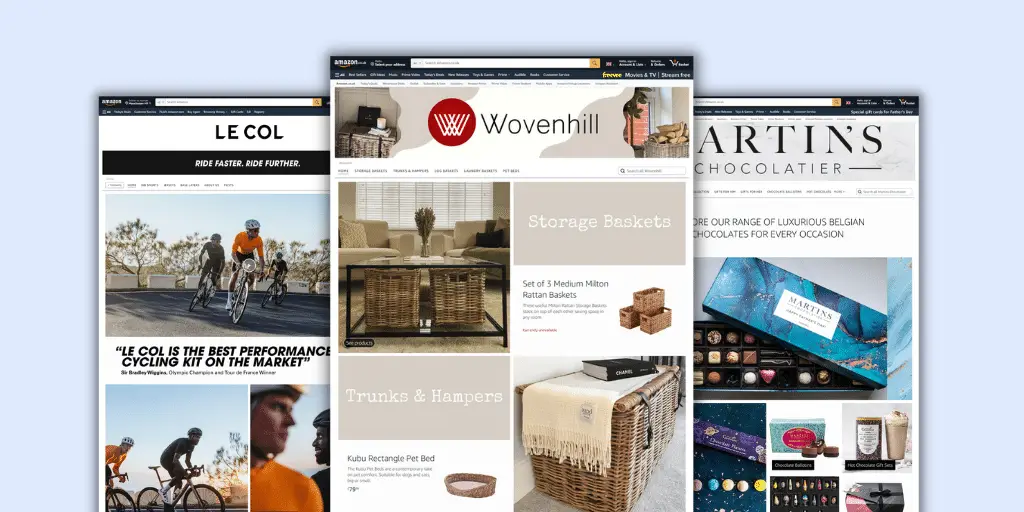Amazon is one of the world’s largest marketplaces, and offers the opportunity for SMEs to reach a huge audience of very engaged shoppers.
It attracts millions of users daily which, depending on the product category, competition and how good the product listings are, minimises the need for paid advertising for a lot of brands.
However, the platform has seen a big increase in the number of brands listing their products in it, and can be a very competitive marketplace. And when you add their fees to the mix, the idea of listing products on Amazon can be daunting for a lot of small businesses, especially if their margins are already low.
Whether you are considering this channel as a new potential revenue stream for your small business, or you have already listed your products but are wondering where to go from there, there are a few factors you should consider before investing more time, money and resources on this platform.
How Much Does it Cost to Sell on Amazon?
Amazon does not charge a huge amount upfront, which makes it a fairly accessible platform for small brands. However, it does charge a few other fees, which range from a flat fee per product sold to a percentage of the product price.
Seller Accounts
There are two types of seller accounts you can sign up for:
Professional Seller Account: This account costs £25 (excluding VAT) per month and allows you to sell an unlimited number of products.
Individual Seller Account: This account is free. However, you will be charged £0.75 per item sold.
Referral Fees
Amazon charges a referral fee on each item sold, which varies by category but is typically between 6% and 45% of the item’s sale price.
Amazon referral fees are calculated as a percentage of the item’s sale price and vary by product category. For example, the referral fee for electronics is typically 7% while the referral fee for clothing is 15%.
FBA Fees
If you use Amazon’s Fulfilment by Amazon (FBA) service, you will be charged a fee for storage, packing, and shipping of your products.
Fulfilment Fees: Charged per item and vary depending on the size and weight of the item being sold. Fulfilment fees include picking, packing, shipping, handling, and customer service
Storage Fees: Amazon charges storage fees for each unit stored in its fulfilment centres. The storage fees are based on the amount of space an item occupies and the time it spends there
Other Fees
Amazon also charges various other fees, such as closing fees for media items (£1.80) and refund administration fees (20% of referral fee charged).
How does Amazon compare to other marketplaces?
There are several marketplaces that allow you to list your products in a similar way as Amazon does, and it’s a good idea to consider them if their target audience is closer to the people you want to reach with your products.
The table below shows the account and referral fees for some of the most popular ones:

Advertising Costs
With such a huge influx of brands joining the platforms, we have seen Amazon CPCs increase over the last few years. However, they still remain under what most other platforms are showing on average, making it a good choice if marketing budgets are tight.

What competition will I face?
With so many brands selling on Amazon, it can be tough for some product categories to get the visibility needed to make sales on the platform sustainable.
Before you start selling, it’s crucial to consider the potential budget you might need for advertising your products on Amazon, as well as the amount of competing brands you’ll have to deal with.
International Competition
Marketplace Pulse estimates that there are over 2.4 million active sellers on the platform, and in recent years there has been an influx in Chinese manufacturers selling DTC.
This is causing a race-to-the-bottom effect, since these manufacturers can offer prices that are tough to match.
Amazon Brand
In addition, there’s competition from Amazon themselves. The Wall Street Journal has gathered evidence that Amazon used data collected on sellers to launch competing products, despite the company’s repeated statements that it prohibits such practices.

Are there any incentives to help small businesses?
Amazon offers some unique incentives that can be very beneficial for small businesses when it comes to competing against bigger, more established brands.
Small Business Badge
The Amazon Small Business Badge is a program that was launched by Amazon in 2020 to help small businesses stand out on the platform.
The badge is available to sellers who meet the EUs definition of a small business:
“Small businesses are those with fewer than 100 employees and total annual revenue of less than $50 million.”

Minority Owned Business Badge
In late 2022, Amazon sent an email to US sellers introducing a certification programme aimed at highlighting nationally-recognised certifications like minority-owned, veteran-owned, or women-owned businesses.
Amazon recognises that consumer habits are changing, with many shoppers looking to diversify their purchases, so these new certifications are aimed at making minority-owned businesses easier to identify.

What brand-building tools are there?
Amazon offers some unique tools to help you build an immersive experience around your brand, and introduce potential customers to your story, mission and products.
Brand Registry
Amazon Brand Registry is a program that helps brand owners protect their intellectual property and create a better shopping experience for customers.
By enrolling in Brand Registry, sellers gain access to tools that help them control their brand presence on Amazon, such as:
- The ability to create and edit product detail pages
- Access to a powerful search tool that can identify potential trademark violations, and more

A+ Content
A+ Content is a tool that allows sellers to create more detailed and engaging product listings by adding images, videos, and other multimedia content.
It is aimed at helping sellers to differentiate their products from competitors and provide customers with a more engaging shopping experience.
Amazon estimates that adding A+ Content to listings helps to improve CVRs by around 10%.

Brand Stores
Brand stores are a self-service platform that allows sellers to create their own brand storefront on Amazon. Stores can be customised with images, videos, and other multimedia content, and are aimed at helping to improve product discoverability of your entire product catalogue.

Should You Do It?
All in all, Amazon remains a big opportunity for most retailers, whether big or small. If you are a small business with a competitive product in an uncrowded product category and have decent margins, selling on Amazon can give you access to a completely new set of potential customers with high purchase intent.
Would you like to find out how we increased revenue for one of the small businesses we work with by 100% YoY? You can read all about it here.
If you need help with getting started on Amazon, or you’d like to supercharge your Amazon sales velocity, get in touch with our Marketing for Amazon team.


